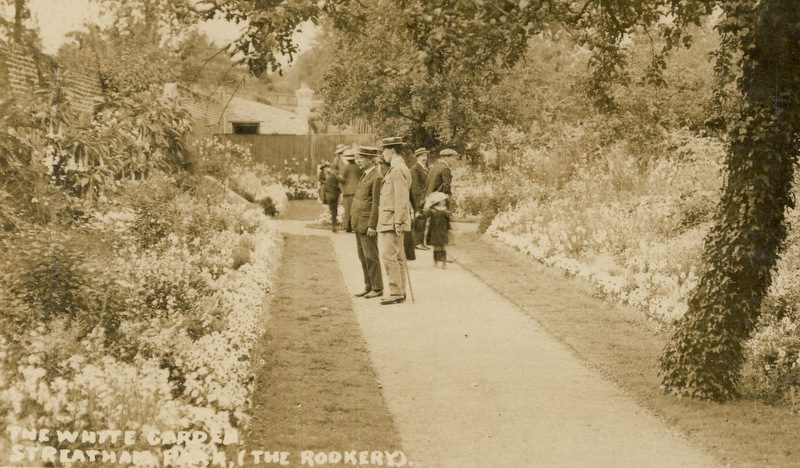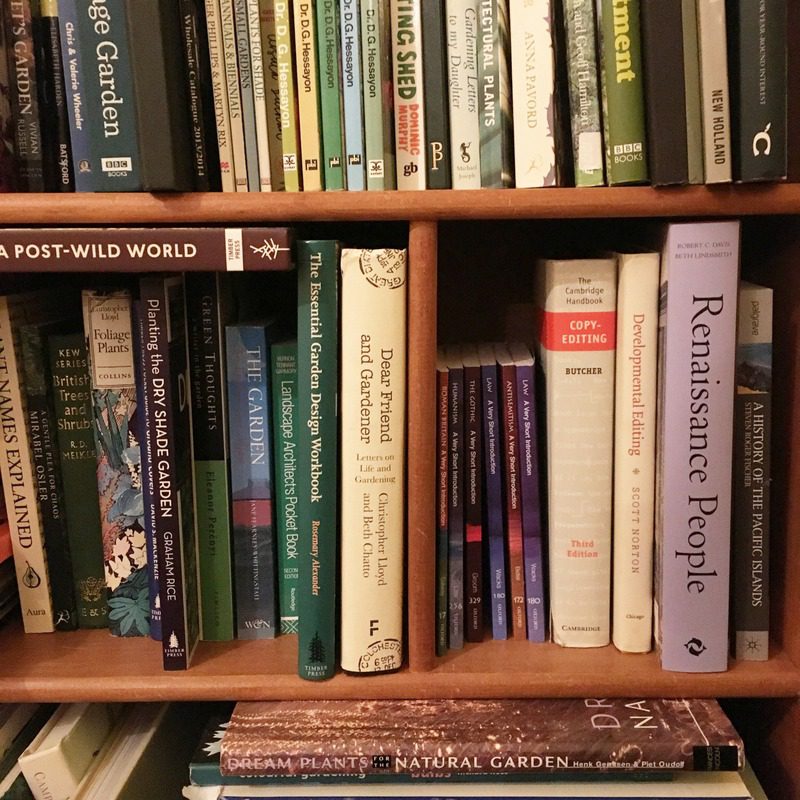 This article first appeared in the August 2014 edition of Common Knowledge, the newsletter of the Friends of Streatham Common. The illustration, taken from a contemporary postcard, shows visitors admiring the newly-opened White Garden.
This article first appeared in the August 2014 edition of Common Knowledge, the newsletter of the Friends of Streatham Common. The illustration, taken from a contemporary postcard, shows visitors admiring the newly-opened White Garden.
‘Whoever had the inspiration to plan part of the ground solely for white flowers must have been blessed with the simplicity of genius. The Garden is unique, and offers a charming prospect to the eye.’
Writing in the Westminster Gazette just after the newly acquired and redesigned Rookery Garden opened to the public in July 1913, this commentator was impressed by the White Garden’s innovative colour palette. White gardens were becoming fashionable among the elite of the day, but the Rookery’s popular White Garden remained unique among London’s public parks until well into the twentieth century.
Influences
William Robinson, an Irish gardener who came to England in 1862, was a key influence on gardens like the Rookery. Robinson advocated ‘wild gardening’, rejecting the carpet bedding and overly formal gardening styles that had emerged from the new wealth and technological advances of the Industrial Revolution in favour of the dense planting of hardy perennials in naturalistic drifts. ‘Wild gardening’ , combined with the Arts and Craft movement’s regard for rural traditions, led to the trend for mixed herbaceous borders using hardy perennials.
Gertrude Jekyll, a friend of Robinson, was another hugely influential garden designer. A trained artist, she did much to popularize colour-themed borders. The White Garden created at Hidcote by Lawrence Johnston in the early 1900s, one of the first of many English white gardens, was influenced by both Jekyll and Thomas Mawson, author of The Art and Craft of Garden Making.
The most famous popularizer of the idea of white gardens, Vita Sackville-West, did not start to plant her ‘grey, green and white garden’ at Sissinghurst until 1949. Sackville-West gardened in the tradition of Robinson and Jekyll, and was influenced by Hidcote. Since her mother briefly owned a house in Streatham, she might even have gathered inspiration from the Rookery’s White Garden!
Unearthing the past
Thanks to the Westminster Gazette’s enthusiastic reporter, we know that the first White Garden planting scheme included roses, foxgloves, hollyhocks, phlox, pansies, violas, and sweet peas – all fashionable plants of the time. There is no complete historical record of planting in the garden, but sources show that it has changed over the years, reflecting fashion and fluctuating park budgets. At times the planting has been quite daring: in 1922 the Streatham News reported on Brugmansia plants growing in the White Garden. These tender exotics spent their winters under glass in Battersea. Another snapshot comes from a Gardener’s Chronicle article of 1927 which describes lilies, foxgloves, phloxes, campanulas, grasses, box, violas and an old apple tree – probably a remnant of the orchard that once stocked the fruitbowls of The Rookery itself.
Planting for the future
White gardens are enjoying a resurgence, and many of the plants used in today’s white gardens are modern cultivars of those chosen by the Rookery’s Edwardian gardeners. Some of the plants and ideas under consideration for the White Garden’s redesign might have struck them as novel, but – given the rapid pace of change in their own time – they would no doubt have taken it all in their stride.
Terka Acton



 This article first appeared in the August 2014 edition of Common Knowledge, the newsletter of the Friends of Streatham Common. The illustration, taken from a contemporary postcard, shows visitors admiring the newly-opened White Garden.
This article first appeared in the August 2014 edition of Common Knowledge, the newsletter of the Friends of Streatham Common. The illustration, taken from a contemporary postcard, shows visitors admiring the newly-opened White Garden. 